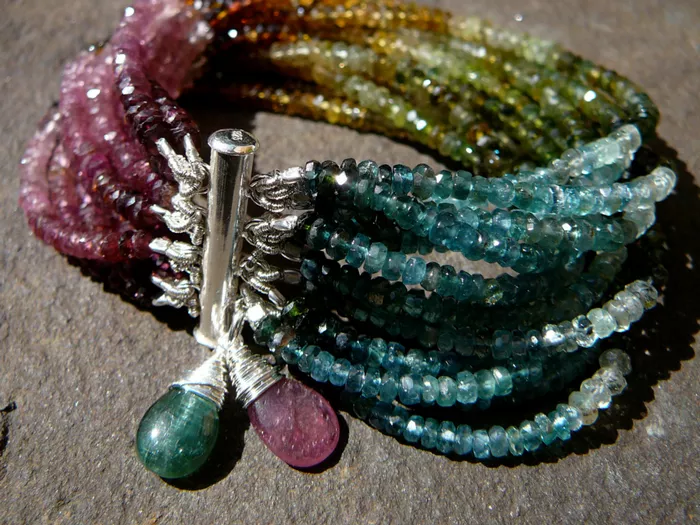Opals, known for their mesmerizing play of colors and inner fire, have fascinated humanity for centuries. This precious stone, called “upala” in Sanskrit and “opalus” in Latin, derives its enchanting beauty from silica spheres bonded by water, diffracting light to produce captivating flashes of color.
Although opals are found across the globe, the most coveted specimens originate in Australia. Yet, opals hold significance in various cultures across Asia. In Malaysia, they’re linked to magic and intuition, while Chinese culture associates them with hope and clarity. The Philippines views opals as symbols of purity.
However, during the 19th century in Europe, opals were believed to bring bad luck. This superstition gained traction with the publication of Sir Walter Scott’s novel “Anne of Geierstein” (1829), featuring a cursed opal. Contemporary audiences might recall the mention of an opal necklace in “Harry Potter and the Half-Blood Prince” (2005), used to curse a Hogwarts student.
But is there any truth to these tales or are they merely fiction? To unravel the mystery behind opals, Tatler interviewed Joyce Tsang, a crystal healing expert and founder of Stone & Star, a crystal healing service.
Tsang explains that opals come in three main varieties, each emitting unique energies:
1. Precious Opals: These radiant white opals are prized for their milky color and colorful flashes. They are believed to promote purification, innocence, and emotional healing, as well as clear stagnant energies and strengthen intuition. The rarer black opal amplifies manifestation abilities and meditation and is thought to connect the root and crown chakras.
2. Fire Opals: Fire opals ignite inner passion and creativity, boost self-confidence, and are thought to support fertility issues and stimulate the root and sacral chakras.
3. Common Opals: These opals are known for their calming energy. Soft pink opals comfort the heart, heal emotional wounds, and awaken unconditional love and inner peace. Green opals help wearers connect with nature, while blue opals stimulate communication, confidence, and creativity. Brown and black opals are believed to shield the wearer from negativity and were historically used to strengthen eyesight.
Opals are thought to offer various health benefits, including strengthening the skin, nails, and hair. They may be helpful for issues such as hair loss, brittle nails, eczema, psoriasis, and rosacea. However, it’s important to note that crystals are not a substitute for medical treatment, and one should always consult a qualified medical professional for health concerns.
Who Should Wear Opals:
Opals are ideal for individuals born under the zodiac signs of Libra, Cancer, Pisces, and Scorpio. Those born in October under the Libra sign are highly compatible with opals, although some cultures advise against gifting opals to Libras, suggesting they should choose and wear the crystal themselves. Opals are recommended for anyone looking to boost creativity and embrace their inner light. Expectant mothers and those hoping to conceive often wear opals for their life-giving energies. Overall, opals are a wonderful choice for sensitive souls, artists, and dreamers.
Who Should Avoid Opals:
Opals may not be suitable for individuals going through periods of emotional and mental weakness, as they could amplify scattered thinking and negative emotions. Those surrounded by low-vibrational energies from energy drains, toxic environments, or negative people may also experience heightened negativity from opals. Additionally, those who firmly believe opals are ill-fated should steer clear of them.
Incorporating opals into your routine should be done with careful consideration of your mindset, surroundings, and openness, as the stone’s effects may vary depending on the individual.
How to Wear Opals:
Opals can be worn in various forms, including rings, earrings, pendants, or pins. According to Vedic astrology, opal rings should be worn on the middle or ring finger of the right hand to honor Venus, the opal’s ruling planet. Bezel settings are ideal for securing the stone while allowing its luminous fire to shine. Opals pair beautifully with diamonds, which amplify their brilliance. Rings are traditional for harnessing opal’s energies, as the right hand projects the energy outward into one’s active world.
Care Tips:
Caring for opals requires special attention. Clean opal jewelry gently with mild soap and water, drying it immediately with a soft cloth to avoid damaging the relatively soft stone. Avoid wearing opals during strenuous activities or at sandy beaches where they could get scratched or chipped. As porous gems, opals should be removed before swimming, bathing, cleaning, or dishwashing to prevent absorption of chemicals or dirt. Fire opals, in particular, should be kept away from heat sources. Periodically moisten opals with natural oil or water, especially in dry climates. Humidity helps preserve their water content. For energetic cleansing, place opals atop clear quartz or selenite. With basic care and precautions, opals, the October birthstone, can retain their beauty for many years.
Incorporating opals into your life is a personal choice, and it’s advisable to approach it with discretion and an understanding of the stone’s potential effects.


